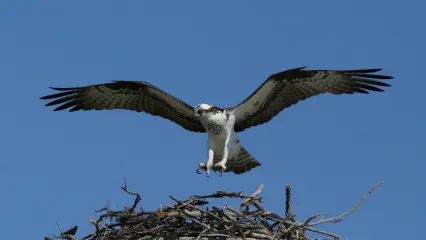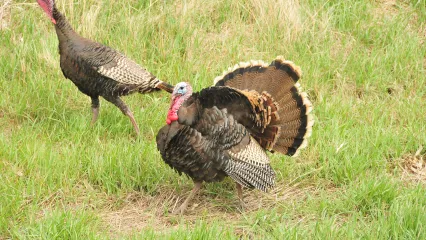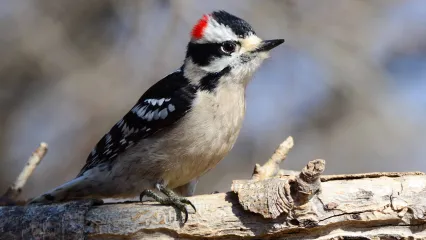
Description
The distinct face of the barn owl is recognized around the world. In fact, one is as likely to spot the white, heart-shaped face in Oklahoma as in Africa, or even Australia. The barn owl is one of the most wide-spread of all land birds. They are found on all continents (except Antarctica) and even on many large, oceanic islands. In Oklahoma, as in across their cosmopolitan range, barn owls can be found in mixed grasslands or open forests and they are often found in close association with man.
The owl's keen eye sight and acute sense of hearing makes it a match for even the most alert mice on the darkest nights In addition to sharp talons to catch their prey, barn owls also have special feathers on the front edges of their wings that reduce the amount of noise they make when flying. Their nearly silent flight allows them to sneak up on mice and other prey.
Although the nocturnal birds eat mostly mice and meadow voles, they are opportunistic eaters, consuming gophers, shrews, rats and small birds . Like other owls, barn owls are unable to digest fur, feathers and bones. They cough up the undigested parts in a pale, odorless lump called an owl pellet. Biologists can find out what an owl has eaten by examining the remains in the pellet.
Since barn owls only come out at night, your best chance at seeing these unique birds is late in the evening as the light of the day fades away or first thing in the morning as sky begins to glow in the east.
Size
This distinctive, crow-sized owl grows 15 to 20 inches in height and is mostly white in color although it can appear tan or even yellow at times. It has long, feathered legs and makes a loud, rasping hiss, rather than the familiar hoot of other owls.
Habitat
Barn owls get their name from their tendency to nest high in barns, grain silos, steeples or other man made structures. In the wild, they nest in hollow trees or in rocky cliffs. Barn owls will breed any time during the year, depending on food supply. They typically nest in early spring, but when food supply is plentiful, barn owls may rear a second brood in the late summer or early fall.
Life Cycle
Unlike many other birds, barn owls do not build nests; instead the female lays 5- 7 white eggs on any flat, enclosed area high above the ground. The clutch of eggs is laid over a two or three day period and incubation starts after the first egg is laid. It takes from 32 to 34 days for the first egg to hatch.
Like most young animals, the little owlets are hungry all the time. Both the male and female hunt throughout the night to feed their fast-growing young. The young owls are covered in white down when they hatch, but they grow their adult plumage in about two months. After a few flying lessons, the young hunters are on their own after a week of hanging around the nest site and learning to hunt.


